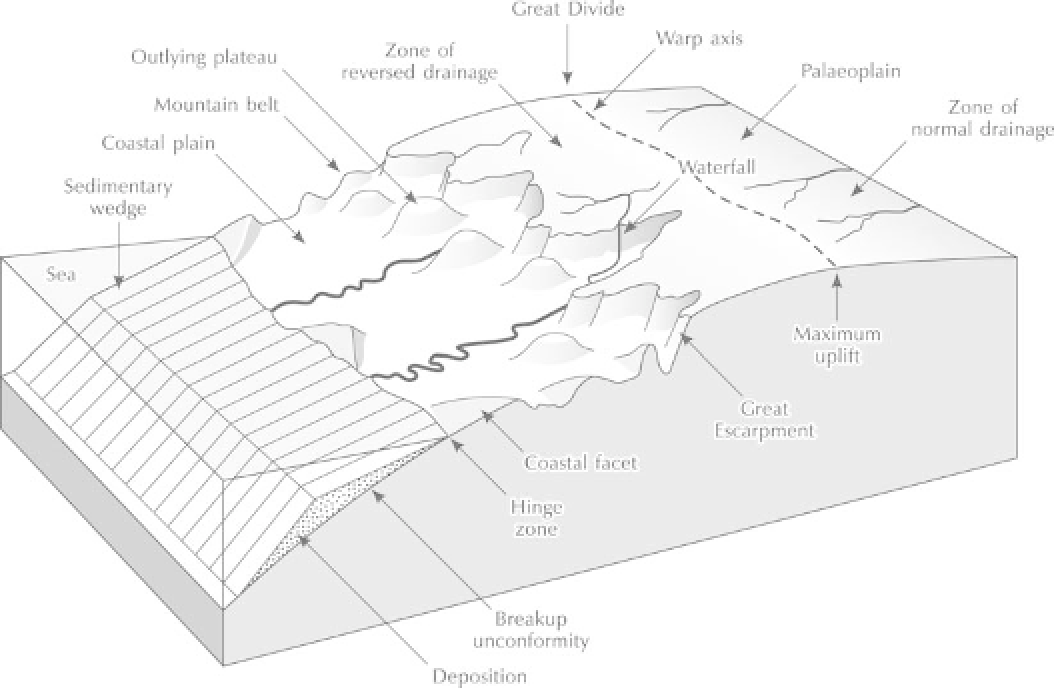Geology Reference
In-Depth Information
Figure 4.7
The chief morphotectonic features of a passive continent margin with mountains.
Source:
Adapted from Ollier and Pain (1997)
where the valleys deeply incised into the escarpment,
although modified by glaciers, are still recognizable
(Lidmar-Bergström
et al
. 2000). Some passive margins
that lack great escarpments do possess low marginal
upwarps flanked by a significant break of slope. The
Fall
Line
on the eastern seaboard of North America marks
an increase in stream gradient and in places forms a
distinct escarpment. Below great escarpments,
rugged
mountainous areas
form through the deep dissection of
old plateaux surfaces. Many of the world's large water-
falls lie where a river crosses a great escarpment, as in
the Wollomombi Falls, Australia.
Lowland
or
coastal
plains
lie seawards of great escarpments. They are largely
the products of erosion. Offshore from the coastal plain
is a wedge of sediments, at the base of which is an
unconformity, sloping seawards.
Interesting questions about passive-margin land-
forms are starting to be answered. The Western Ghats,
which fringe the west coast of peninsular India, are a great
escarpment bordering the Deccan Plateau. The ridge
crests stand 500-1,900 m tall and display a remarkable
continuity for 1,500 km, despite structural variations.
The continuity suggests a single, post-Cretaceous pro-
cess of scarp recession and shoulder uplift (Gunnell
and Fleitout 2000). A possible explanation involves
denudation and backwearing of the margin, which pro-
motes flexural upwarp and shoulder uplift (Figure 4.9).
Shoulder uplift could also be effected by tectonic pro-
cesses driven by forces inside the Earth.
Active-margin landforms
Where tectonic plates converge or slide past each other,
the continental margins are said to be
active
. They may
be called
Pacific-type margins
as they are common
around the Pacific Ocean's rim.

